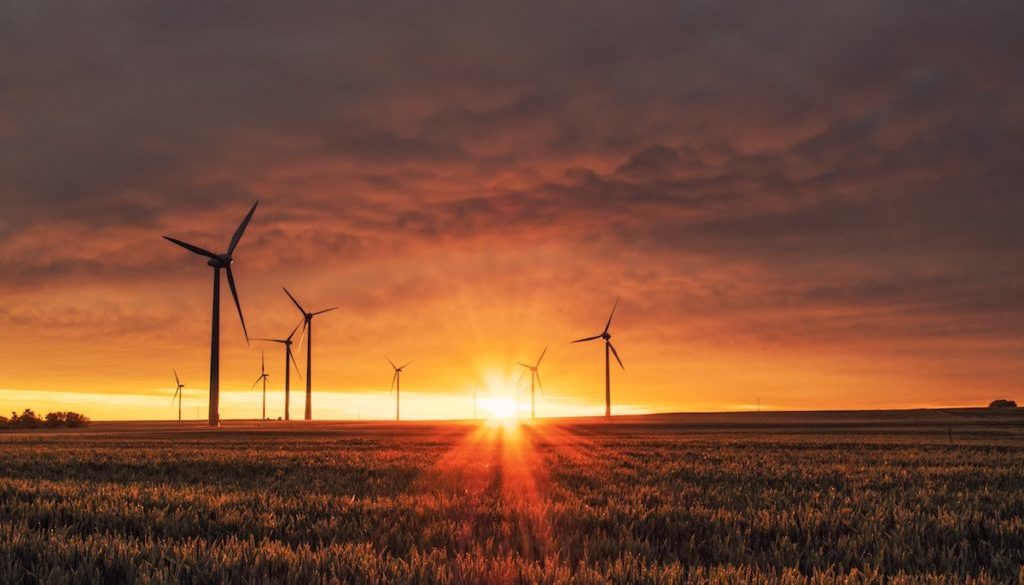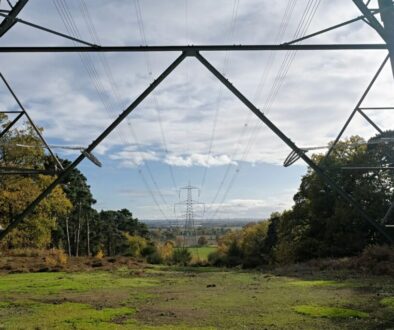How far do Community Benefit Schemes reach into rural areas?
Much of our renewable energy infrastructure is located in rural communities. From wind farms, and nuclear power stations, to tidal and solar, all have wide ranging implications for host localities. It has become increasingly common for renewable energy projects to make financial or in-kind payments to local communities. Often described as “benefits payments”, “compensation schemes” “incentive payments” or “added value”; the level of payment made and how it is used for ‘community’ ‘benefit’ varies greatly. What do renewable energy community benefit schemes offer rural communities? Jessica Sellick investigates. ………………………………………………………………………………………………..
On 1 April 2012 the Planning Inspectorate became the Government agency responsible for operating the planning process for what are known as ‘Nationally Significant Infrastructure Projects’ (NSIP). NSIPs are projects such as new roads, power generating stations or harbours which require a type of consent known as ‘development consents’ under the Planning Act 2008.
A search of energy projects on the National Infrastructure Planning (PINS) website on 2 December 2019 revealed 99 projects. Of these, 31 were at the pre-application stage; 3 at the pre-examination stage; 5 at examination stage; 2 at recommendation stage; 4 at decision stage; 52 at the decided stage and 1 project had been withdrawn.
The Planning Act 2008 streamlined the decision-making process for these major infrastructure projects; with the purposes of making it a fairer and faster process for both communities and applicants. In March 2016 Government published its first National Infrastructure Delivery Plan – setting out plans for economic infrastructure, housing and social infrastructure over a 5-year period. This 2016-2021 plan focuses on ensuring the right projects are delivered well; determines the proprieties and project/programme milestones that Government should focus upon; and aims to get the right (public and private) investment in place. The delivery plan sets out a range of policy mechanisms to support the transition to an affordable, clean energy system – with the priorities to 2020-2021 centred around new nuclear investment, gas power stations, large-scale offshore wind; as well as projects relating to interconnectors, smart meters and transmission and distribution.
Of the projects currently listed on the PINS site the majority of entries (23 projects) are related to wind, followed by grid lines (11 projects), gas (6 projects), nuclear (5 projects), tidal lagoons (4 projects), biomass and solar (2 projects respectively). While in a policy context this move to improve the planning and delivery of infrastructure by increasing investment and accelerating project delivery is gearing us towards a more productive economy; these large projects can sometimes be controversial because they have wide ranging implications for the communities hosting them. In response, a range of new procedures, processes and methods for their assessment and management, including widening impact assessment and the use of Community Benefit Schemes (CBS) have emerged.
Impact Assessments – such as EIA, SIA, SEA, SA, HIA, HRA sometimes include special procedures for subsets of major projects through the examination system operated by PINS. Community Benefit Schemes (CBSs) refer to agreements between the various stakeholders involved in a project – in particular, between the developer and the host community. The schemes can include financial incentives, infrastructure and community empowerment measures and are drawn up in recognition of a community’s participation in an activity that is perceived as being in the ‘national interest’.
CBSs are different from project designed-in measures which seek to minimise adverse local impacts at the early stage of planning; and they are also different from mitigation and enhancement measures which may evolve during the assessment and decision making process.
Why have Community Benefit Schemes? Views range from developer philanthropy and corporate social responsibility through to mitigating the anticipated and/or adverse impacts of construction or operations [through preventive or ameliorative actions]; compensation for actual damage; rewarding communities for assuming non-local cost or risk; and participating in an activity which is deemed to be in the national interest.
The United States has been a long history of CBSs. Here CBSs are legally enforceable contracts signed by community groups and developers in which the developer agrees to shape the development in a certain way or to provide specified community benefits. Examples include: the Lakers Stadium and Los Angeles Airport expansion. Of the $500 million community benefits for LAX expansion, $230 million was allocated to soundproofing local schools and homes.
In France, the Government pays compensation as part of its Grand Channtiers programme. Here the level of CBA funding varies from 1-10% of project value and is used to fund a wide range of activities, particularly affordable housing.
Back in the UK, the wind energy industry has been at the forefront of the development of CBSs. A toolkit published by the Centre for Sustainable Energy back in 2009 aimed to make meaningful community benefits such as being a good neighbour; paying compensation for impacts on local amenity and the inconvenience caused by the construction process; and sharing the rewards from wind as a ‘common’ which nobody owns more routine and systematic in UK wind energy projects.
The completion of Sizewell B nuclear power station back in 1995 led to a package of ‘ameliorative measures’ such as village hall improvement projects in recognition of the pressure placed on local facilities by the project. More recent examples include the Copeland Community Fund (CCF), an agreement negotiated with the Government to recognise the service Copeland provides to the nation by hosting the Low Level Waste Repository (LLWR) close to the village of Drigg; and EDF energy’s £20 million Community Fund to improve the social, economic and environmental wellbeing of communities affected by the development of Hinkley Point C.
While the justification for CBSs varies considerably between countries, project types and over time; the benefits of large energy projects tend to contribute to national and sometimes global objectives.
How is the payment calculated? Payments can be linked to the capacity of the development – with a one-off payment made by a company during the construction period (e.g. £5,000/MW); they can be related to the profitability of the development (i.e., the surplus profit that a project will generate); or they can be at the discretion of the developer (drawn from the Corporate Social Responsibility budget or described as a ‘goodwill contribution’). Payments can be ad hoc and discretionary or are guaranteed by Government using statutory powers on behalf of communities. They can comprise single donations or annual contributions and they may have conditions attached (such as the money has to be spent over a set period of time or returned to the company).
Local Authorities often play a vital role in negotiating the level of payment; often acting on behalf of the community in liaising with developers and/or in collecting and distributing the payments. In the case of the Copeland Community Fund, the Low Level Waste Repository provides the Fund with £1.5 million a year for every year that the repository is operating; in addition to an initial endowment of £10 million. The CCF is supported by Copeland Borough Council and Cumbria County Council [which acts as the Accountable Body for the funding]. East Riding of Yorkshire Council is responsible for a number of community funds linked to energy related developments – the Burton Pidsea Community Wind Farm Fund, for example, receives an annual donation from the wind farm owner EnergieKontor UK Limited. The amount of the donation is based on a formula of £2,000 per megawatt of the wind farm to a maximum of £20,400 per annum.
While early examples of CBSs for energy projects in the UK were relatively small – the number, their scale and size of payments has increased over time.
In Scotland, over the last 15 years the scale of benefits has increased from £1,000 per MW size of the project over the working lifetime of the project (normally 25 years) for early projects to at least £5,000 per MW for more recent projects. For a wind farm of 20 MW, the annual benefit is estimated at £100,000.
In England in 2011 the renewable energy industry (Renewables UK) agreed a protocol to provide community benefits in connection with eligible on-shore wind schemes of no less than £5,000 per MW per year or benefits in kind to an equivalent value [the protocol was updated in 2013]. The annual contribution is index linked and commences within 12 months of a project making its first commercial export of power and applies for the operational lifetime of the scheme.
For solar, the benefits are often less than for wind; with some community benefit negotiations based on a minimum of £1,000 per MW of installed capacity for a period of 20 years, linked to the Retail Price Index (or a pro-rota single upfront community benefit payment). In Dorset, for example, the majority of solar farm developments in Dorset have offered a community benefit fund to host communities, often through the local Parish or Town Council.
The UK Nuclear Decommissioning Authority (NDA) provides a Community Fund for communities at Drigg in Copeland (West Cumbria) and at Dounreay in Caithness (Scotland) which have storage facilities for low level nuclear waste.
For shale, the energy industry provides community benefits of £100,000 per swell site when a test well is drilled plus a 1% share of revenues from any resultant gas production. This is in addition to provisions for Local Authorities to retain all business rates paid by developers and for energy firms to make direct payments to local residents and/or set up trust funds to be managed by local communities.
For remote off-shore locations, until recently community benefit payments have been more ad hoc and pro rota compared to on-shore locations. However a recent £10 million CBS initiative by the Danish energy company Dong, in relation to its Hornsea One and Race Bank wind farms, will distribute approximately £0.5 million pounds a year to help local initiatives over the next 20 years through the East Coast Community Fund.
In March 2019, Cumbria County Council (CCC) formally granted planning approval for the development of the Cumbrian Metallurgical Coal Project – to be known as Woodhouse Colliery. It is anticipated that site work will commence in Spring 2020, with coal production commencing around 24-months from the start of construction. Once in production, WCM will create a Community Fund to support local charities and organisations with projects that echo our desire to promote health and well-being, local amenities such as footpaths and cycle ways, as well as a plan to secure the future of the old Haig Mining Museum building.
Across these examples, community benefits for energy projects can broadly be divided into three categories: (1) financial incentives – either an annual payment or lump sum or both; a share in local tax revenues, reduced utility fees and/or paying shares into a local community organisation. (2) Social benefits in kind where a developer may provide for a community facility or local environmental improvements. (3) Community empowerment measures – with local participation in decision making. In practice, community benefits can often be an integrated package across all three categories – and these can be shaped by local community preferences (e.g. for reduced utility bills), or technical and regulatory factors.
At a local level community benefits can be very sensitive issues. Some residents perceive it to be providing a means for developers to take forward a project that is not wanted by the local community while other people view it as a means of sharing in the rewards of a development.
How do rural communities benefit from the payments? Information on individual CBSs on the PINS website is limited because these agreements are not a material consideration in the planning process. This also makes understand the relationship between community benefits, the planning process, environmental assessment procedures and a series of impact assessments difficult.
On a practical note, a nationally negotiated scheme usually takes a legal approach meaning the scale, type and preconditions of benefits are largely determined beforehand in legislation. In contrast, a locally-negotiated approach involves discussions between developers, local communities and other stakeholders (e.g. Local Authorities) with the agreement reached usually followed by some form of formal written agreement.
A key issue that often emerges in negotiations is how to define the ‘community’ that will ‘benefit’ from a scheme. Is the relevant community determined spatially (i.e., by geography and locality) or by interest? Should the community that benefits be nearest to the site or the area affected most by disturbance or nuisance? What happens if a scheme covers more than one Local Authority area – is it decided by population on a pro rata basis? How is the community defined for off-shore projects – do coastal communities benefit? In 2005 Dumfries and Galloway Council developed a Wind Farms Community Benefit Governance Framework which established two tiers of benefit: (i) 60% of the community benefit funds from any one wind farm would go to communities 15km from the outer edge of the wind farm with the remaining 40% ring fenced for a region-wide fund for renewable energy or energy efficiency projects. The framework was superseded in 2015 by Windfarm Community Benefit Guidelines which removed the 60:40 split and the 15km measurement of host communities. In Northern Ireland and Wales there have also been discussions around whether the purpose of having a community benefit scheme is to recompense the impacts on the nearest communities or should apply to communities over a much wider area.
Back in 2014 the then Department for Energy and Climate Change (DECC) published best practice guidance to showcase good practice and sets out expectations for developers, Local Authorities and communities in the provision of onshore wind developments. The document brought together a set of principles (i.e., timely, transparent, constructive, inclusive, fair, unconditional), with a process for establishing community benefits through the wind development process (preparation phase, planning phase, post-consent phase and operational phase).
A further issue that emerges is the timing of community benefits – should it come early as part of the planning and development processes or staged, perhaps related to project milestones? For financial payments, should a lump sum be paid (up front or at the end) with smaller sums paid on an annual or quarterly basis?
More recently, there have been discussions around the types of communities that are benefitting from CBSs. In April 2018, for example, the Centre for Sustainable Energy published its research into community renewable energy projects in low income areas. The researchers found that the skills, knowledge, time, resources and links to useful people and organisations were not as readily available in low-income communities compared to their more affluent neighbours. They often lacked existing community development and regeneration organisations and Local Authorities had reduced capacity to engage in community energy. As community energy projects in low-income areas seldom emerge directly from the grassroots, with intermediary organisations – locally based and with a community development focus – often acting as the catalyst for energy activity to benefit the community – the authors highlighted the need to bolster the community’s project capacity and resilience (through funds, mentoring and capacity building).
In relation to energy projects, CBSs have become increasingly commonplace over the last 20 years. While CBSs initially focused on on-shore wind projects; they have since expanded to include nuclear, solar, tidal, and shale gas. However, to date, little work has been undertaken to collate the different types of CBs and the community benefits that arise from individual schemes. Mapping what community benefit schemes they are, where they are located, the scale of payments, a description of the benefits they provide (types of initiatives) and measuring the outcomes and impact they achieve for local communities (legacy and sustainability) would provide a better understanding of the collective. And while current attention around CBSs is focused on renewable energy, could it be applied to other types of infrastructure (e.g. flood defences, broadband/mobile connectivity, roads or airports)?
…………………………………………………………………………………………………
Jessica is a researcher/project manager at Rose Regeneration. Her current work includes evaluating two veteran support projects (in Cornwall and North Yorkshire); supporting public sector bodies to measure social value; and reviewing a project that supports parents recovering from drugs or alcohol addictions. She is also a senior research fellow at The National Centre for Rural Health and Care (NCRHC).
She can be contacted by email jessica.sellick@roseregeneration.co.uk or telephone 01522 521211. Website: http://roseregeneration.co.uk/https://www.ncrhc.org/ Blog: http://ruralwords.co.uk/ Twitter: @RoseRegen



